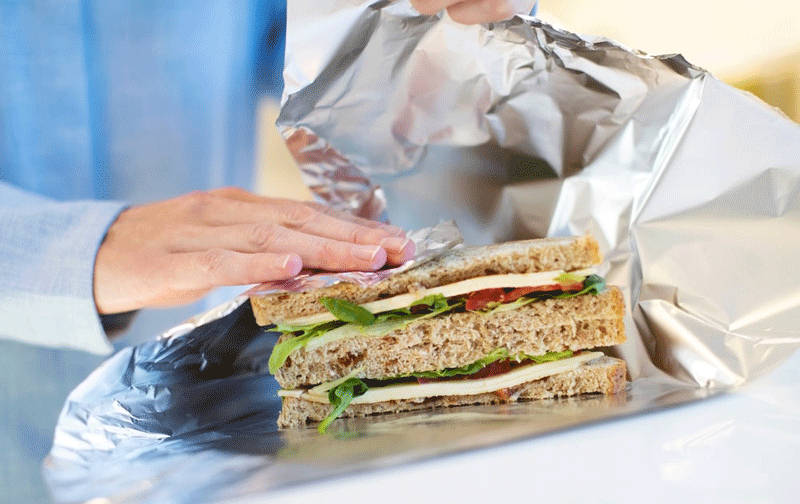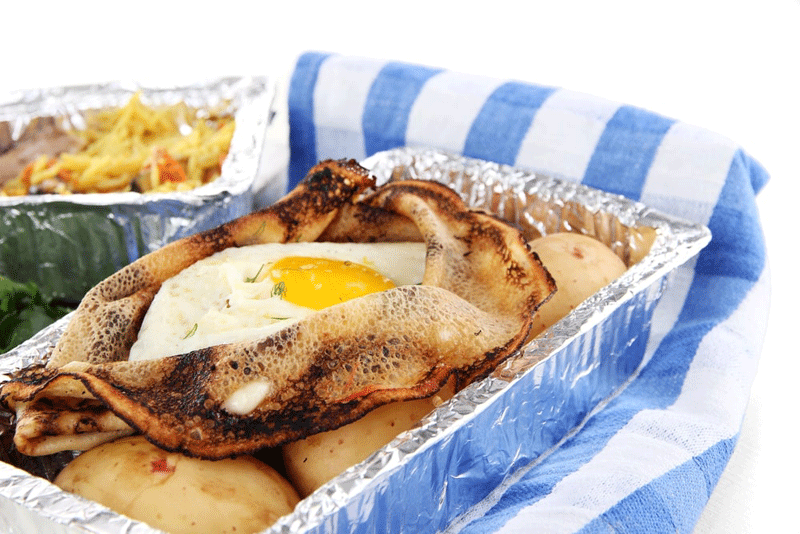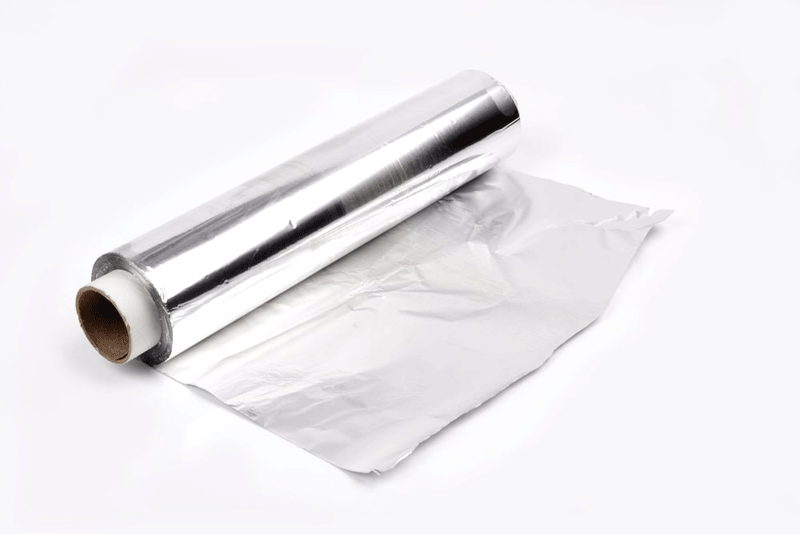The History of Aluminum Foil Packaging
Posted by The Aluminum Association on Oct 16th 2023
The origin of aluminum foil can be traced by to the early 1900s. Life Savers—one of today’s most popular candies—were first packaged in foil in 1913. To this day, the treats are encased in the world-famous aluminum foil tube. The uses of foil have grown over the past 100 years to a nearly endless count. From Christmas tree ornaments to spacecraft insulation, TV dinners to medicine packets—aluminum foil has, in many ways, improved both our products and our lives.
Top 4 Facts about Aluminum Foil
Early commercial use of aluminum foil
One of the first commercial uses of aluminum foil came in 1913. Foil leg bands were used to identify racing pigeons.
Innovative consumer product delivery
Jiffy Pop Popcorn, released in 1959, combined a heavy-gauge foil pan and an expandable, light-gauge foil cover to deliver their "magic treat."
Effective for energy conservation
The "shiny" side of aluminum foil is 88 percent reflective, making it one of the best and most efficient insulators for solar heat.
Billions of containers are produced each year
Approximately 7 billion aluminum foil containers are produced annually. This production rate nets to 220 containers produced every second.
How aluminum foil Is Made

Aluminum foil is produced by rolling aluminum slabs cast from molten aluminum in a rolling mill to the desired thickness. To maintain a constant thickness, a technician monitors the rolling mill sensors to ensure the pressure on the slab is correct.
- Sensors are able to tell the technician if the pressure is too great or not enough, and then the technician can adjust the rollers to apply more or less pressure. It is then coiled and sent to the cold rolling mill.
- The foil is doubled in the cold rolling mill to the desired thickness to avoid breakage because of the thinness.
- Aluminum foil provides a complete barrier to light, oxygen, moisture, and bacteria. For this reason, foil is used extensively in food and pharmaceutical packaging.
- It is also used to make aseptic packaging that enables storage of perishable goods without refrigeration.
Growth Of The Aluminum Foil And Packaging Market

- The first pre-formed, all-foil food packaging containers appeared on the market in 1948.
- This grew into the complete line of die-formed and air-formed foil containers sold in every supermarket.
- A spectacular period of growth occurred in the 1950s and 1960s. Packed in compartmental trays, TV dinners reshaped the food products market.
- Packaging foil is divided into three categories:
- Household/institutional foil
- Semi-rigid foil containers
- Flexible packaging.
For decades, the use of foil has grown steadily in each of these categories.
- Food Preparation: Aluminum foil is "dual-ovenable" and can be used in convection and fan-assisted ovens. A popular use of foil is covering thinner poultry and meat sections to prevent overcooking. The USDA also recommends limited uses of aluminum foil in microwave ovens.
- Insulation: Aluminum foil is 88 percent reflective and is widely used for thermal insulation, heat exchanges, and cable liners. Foil-backed building insulation reflects heat, and aluminum sheets provide a protective vapor barrier.
- Electronics: Foil in electrical capacitors provides compact storage for electric charges. If the foil surface is treated, the oxide coating is insulated. Aluminum foil capacitors are commonly found in electrical equipment, including television sets and computers.
- Geochemical Sampling: Aluminum foil is used by geochemists to protect rock samples. Foil provides a seal from organic solvents and does not taint the samples as they are transported from the field to the lab.
Art and Decoration: Anodizing aluminum foil creates an oxide layer on the aluminum surface that can accept colored dyes or metallic salts. This technique uses aluminum to create inexpensive, brightly colored foils.
Future of Aluminum Foil
Increasingly, aluminum foil is being merged with flexible films to create lightweight packages. This technology allows the packages to expand during production, then contract as the product is consumed. The packaging of pet food, tuna, coffee and soups alone produces 13 billion packages that are candidates for replacement with flexible foil-based packages.
How did Aluminum Foil come into existence?
- The earliest production of aluminum foil occurred in France in 1903.
- In 1911, Bern, Switzerland–based Tobler began wrapping its chocolate bars in foil.
- Their unique triangular bar, Toblerone, is still widely available today.
- Production of aluminum foil in the United States started in 1913.
- The first commercial use was packaging Life Savers into their now world-famous shiny metal tube.
- The demand for aluminum foil skyrocketed during World War II.
- Early military applications used foil strips dropped from bombers to confuse and misguide radar tracking systems.
- Aluminum foil was so vital to the defense that families were encouraged to save foil strips.
- In many towns, the collected foil balls could be exchanged for free entry to a movie theater.
- One of the most innovative uses of aluminum foil came in the early 1960s. The aluminum Christmas tree debuted—complete with foil-covered branches and decorations.
Why Foil Is Shiny On One Side

Aluminum foil has a shiny side and a matte side. The shiny side is produced when the aluminum is rolled during the final pass. It is difficult to produce rollers with a gap fine enough to roll a single sheet of foil. For the final pass, two sheets are rolled at the same time, doubling the thickness of the roll. When the sheets are later separated, the two inside surfaces are matte, and the two outside surfaces are shiny.
Frequently Asked Questions
Why Is Aluminum Foil Popular In Packaging?
Aluminum foil is favored for its ability to provide a complete barrier to light, oxygen, moisture, and bacteria, making it perfect for food preservation.
How Is Aluminum Foil Produced For Packaging?
Aluminum foil for packaging is made by rolling large slabs of aluminum until they are less than 0.2 mm thick, ensuring flexibility and strength.
Are There Environmental Concerns With Aluminum Foil?
While aluminum foil is recyclable, concerns arise from its energy-intensive production process and the tendency of consumers to discard it, leading to environmental waste.


